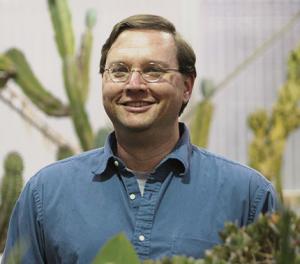Joseph Jez
Professor of Biology and a Howard Hughes Medical Institute Professor at Washington University in St. Louis
Expert Bio
Joseph Jez is a Professor of Biology and a Howard Hughes Medical Institute Professor at Washington University in St. Louis. Joe earned a B.S. in biochemistry from Penn State University, a Ph.D. in biochemistry & molecular biophysics from the University of Pennsylvania, and was an NIH-NRSA postdoctoral fellow at the Salk Institute for Biological Studies. After working as a scientist at Kosan Biosciences (2001-2002), he started his research group at the Donald Danforth Plant Science Center in 2002, and then moved to Washington University in 2008. He has authored more than 125 papers and received a Presidential Early Career Award for Scientists and Engineers, a Phytochemical Society of North America Arthur Neish Young Investigator Award, a Fulbright Senior Specialist Award, and an HHMI Professor award. He currently serves on the editorial boards of The Journal of Biological Chemistry and The Biochemical Journal. Research in the Jez lab uses a combination of structural biology, protein chemistry, and plant biology to understand how environmental changes re-model biochemical pathways in plants and microbes at the molecular, cellular, and organism levels with the aim of engineering these systems to address agricultural and environmental problems. He also helps to educate regulators in the basics of protein biochemistry.
Studies, Articles and Answers
Showing 2 out of 2 results
Question
A: To answer these questions, let’s start with some background on what is a protein, how a protein is made, and what happens when we eat. The first rule is to remember the “Central Dogma” - the sequence of a gene (DNA) encodes the sequence of a protein. Next, proteins are made of combinations of 20 amino acids. Each amino acid shares a common chemical structure (NH2-CHR-CO2H) but with a different R-group. The amine (NH2) of one amino acid can link to the carboxylic acid (CO2H) of another to form a peptide bond. The sequence of a gene dictates the or [...]
A: To answer these questions, let’s start with some background on what is a protein, how a protein is made, and what happens when we eat. The first rule is to remember the “Central Dogma” - the sequence of a gene (DNA) encodes the sequence of a protein. Next, proteins are made of combinations of 20 amino acids. Each amino acid shares a common chemical structure (NH2-CHR-CO2H) but with a different R-group. The amine (NH2) of one amino acid can link to the carboxylic acid (CO2H) of another to form a peptide bond. The sequence of a gene dictates the or [...]
Business Practices GMOs & FarmersQuestion
A: To answer these questions, let’s start with some background on what is a protein, how a protein is made, and what happens when we eat. The first rule is to remember the “Central Dogma” - the sequence of a gene (DNA) encodes the sequence of a protein. Next, proteins are made of combinations of 20 amino acids. Each amino acid shares a common chemical structure (NH2-CHR-CO2H) but with a different R-group. The amine (NH2) of one amino acid can link to the carboxylic acid (CO2H) of another to form a peptide bond. The sequence of a gene dictates the or [...]
A: To answer these questions, let’s start with some background on what is a protein, how a protein is made, and what happens when we eat. The first rule is to remember the “Central Dogma” - the sequence of a gene (DNA) encodes the sequence of a protein. Next, proteins are made of combinations of 20 amino acids. Each amino acid shares a common chemical structure (NH2-CHR-CO2H) but with a different R-group. The amine (NH2) of one amino acid can link to the carboxylic acid (CO2H) of another to form a peptide bond. The sequence of a gene dictates the or [...]
Business Practices GMOs & Farmers